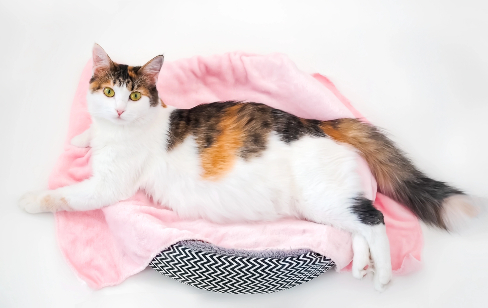Understanding cat pregnancy and the question of abortion
12th January, 2024

Cat ownership comes with a series of responsibilities and difficult decisions. One such situation is an unplanned cat pregnancy in a cat.
As a cat owner, you might be left wondering, how far along can a cat get an abortion? This article aims to provide comprehensive information on this topic, and help you make an informed decision.
Recognising the signs of feline pregnancy
Before you can consider the option of abortion for your cat, it's essential to confirm whether your feline friend is indeed pregnant. Cats exhibit specific signs when they are pregnant, and you can look out for these symptoms to identify a possible pregnancy.
Physical changes
During the early stages of pregnancy, your cat may not show any visible physical changes. However, as the weeks progress, you will begin to notice certain alterations in your cat's physique.
The most common physical sign of a pregnant cat is an enlarged and rounded abdomen. Other noticeable changes include swollen and reddened nipples.
Behavioural changes
Along with physical changes, pregnant cats exhibit certain behavioural changes as well. They might seek quieter, more secluded spaces for rest and start building a nesting area. Some cats might also display changes in their eating habits, such as a slight loss of appetite.
If you observe these signs and suspect that your cat is pregnant, consult with a veterinarian to confirm the pregnancy. Your vet can perform an ultrasound examination or a simple blood test to substantiate your suspicion.
The stages of feline pregnancy
Understanding the stages of feline pregnancy can help you ascertain how far along can a cat have an abortion. A cat's gestation period typically lasts between 65 to 67 days but can vary.
Initial gestation phases
During the initial weeks of pregnancy, your cat might not exhibit any substantial physical or behavioural changes. It's only through tests conducted by a vet that you can confirm if your cat is in the early stages of pregnancy.
Later stages of gestation
As the pregnancy progresses to the later weeks, the physical changes in your cat become more apparent. You will notice the enlargement of the cat's belly, indicating that the cat is in the final stages of pregnancy.
Considering the option of abortion
Once the pregnancy is confirmed, you might be faced with the decision of whether or not to allow the pregnancy to continue.
This decision depends on various factors, including the health of the mother cat, the stage of the pregnancy, and your capacity to care for a litter of kittens.
Reasons for considering abortion
There are several reasons why cat owners might contemplate abortion. The most common reason is an unplanned or unwanted pregnancy.
Other reasons might include the health of the mother cat, the likelihood of genetic abnormalities in the kittens, or the inability to care for and find homes for the kittens.
Ethics and emotions involved
The decision to abort a cat's pregnancy can be emotionally charged and morally challenging. Some people might oppose the idea of terminating the lives of unborn kittens, while others might advocate it based on pragmatic reasoning, such as the problem of cat overpopulation. It's essential to carefully weigh the ethical implications and emotions involved in this decision.
Understanding the procedure of feline abortion
Having an abortion for your cat involves medical procedures that should be performed by a professional. It's crucial to understand these procedures and the risks involved.
Injectable oestrogens
One option for terminating a cat's pregnancy is through the administration of injectable oestrogens. This method is most effective when performed shortly after copulation.
However, it's associated with several potential side effects, including bone marrow suppression and infection of the uterus.
Spaying during pregnancy
Spaying, also known as an ovariohysterectomy, involves removing the uterus and ovaries. This procedure not only terminates the pregnancy but also prevents the cat from becoming pregnant in the future. However, spaying a pregnant cat involves increased risks to the female cat compared to routine spaying.
Medical abortion
If it's crucial for the female cat to breed in the future, the pregnancy can be terminated medically without sterilising her.
This procedure involves the use of medications to end the pregnancy during the second trimester, approximately 30-40 days into the pregnancy.
Deciding when to abort a cat's pregnancy
A common question that arises is how far along can a cat get an abortion? The timing of the abortion depends on several factors, including the health of the mother cat, the stage of the pregnancy, and the method of abortion.
Early stage abortion
During the initial stages of pregnancy, the vet might prescribe drugs that cause the body to either reabsorb or expel the foetuses.
Another method is to spay the cat, which involves removing the foetuses along with the uterus. Feline abortion drugs are not always effective and can have side effects. Spaying is a definitive solution for unwanted litters.
Late stage abortion
If the cat's belly is noticeably enlarged, indicating that the cat is in the final stages of pregnancy, the vet will assess the cat's health and perform tests to consider the risks of a late-term abortion.
Some veterinarians will perform a termination at any stage of the pregnancy, while others might not wish to do so within two weeks of the due date due to potential complications.
Post-abortion care for cats
Whether your cat has undergone a planned abortion or experienced a spontaneous abortion or miscarriage, it's essential to provide the necessary post-abortion care. The most common symptom following the procedure is bleeding.
Monitoring your cat's health
After the abortion, your cat might experience discomfort, vaginal bleeding, or abnormal discharge. Monitor your cat closely to ensure that more severe health issues do not develop.
Consultation with the vet
Following the abortion, it's crucial to schedule follow-up visits with the vet to confirm the effectiveness of the procedure. This could involve another blood test, ultrasound, or radiographs of the belly.
Understanding the risks of abortion
While abortion is a viable option for terminating an unwanted pregnancy in cats, it comes with certain risks and potential side effects.
Health risks
Depending on the method of abortion and the stage of pregnancy, the procedure can pose certain health risks to the mother cat. These risks might include infections, hormonal imbalances, and physical discomfort.
Emotional distress
Abortion can also cause emotional distress for the cat. Cats are sentient beings, and they might experience psychological trauma due to the sudden termination of their pregnancy.
Preventing unplanned pregnancies in cats
The best way to avoid the difficult decision of whether to abort your cat's pregnancy is to take preventative measures. As cat owners, it's our responsibility to ensure the welfare of our felines.
Spaying
Spaying is the most effective method for preventing unwanted pregnancies in cats. It involves the removal of the uterus and ovaries, thus eliminating the possibility of future pregnancies.
Keeping cats indoors
Another preventative measure is to keep your female cats indoors, especially during their heat period.
Cats in heat are more likely to seek out male cats and mate, which can result in an unwanted pregnancy. Check out our recent blog on how to transition an outdoor cat to an indoor cat for a few tips.
Understanding the impact of unwanted pregnancies
Unwanted pregnancies in cats contribute to the growing problem of cat overpopulation. Each year, countless unwanted kittens are born, many of which end up in animal shelters or living as strays.
Strain on animal shelters
Many animal shelters are overwhelmed by the number of unwanted cats and kittens they receive. They often lack the resources to care for all these animals, resulting in many cats being euthanised.
Increase in stray cat population
Unwanted cats often end up living on the streets as strays. These stray cats contribute to the growing feral cat population, posing a threat to local wildlife and public health.
Concluding thoughts on feline abortion

The decision to abort a cat's pregnancy is a complex one, involving ethical considerations, emotional factors, and health risks. As responsible cat owners, it's our duty to make informed decisions that prioritise the welfare of our feline friends.
If you're faced with the question of how far along can a cat have an abortion, it's vital to consult with a vet and consider all the factors involved. And remember, prevention is always better than cure. By taking steps to prevent unwanted pregnancies, we can contribute to the wellbeing of our cats and the broader feline population.
Remember, cat insurance can help cover the costs of vet visits, procedures, and treatments. To get a cat insurance quote for your furry friend, you can get a quote through our website. If you would like to talk to one of our cat insurance team, you can get in touch with us on 0330 102 5748.
Helpful Pages
Recent Posts
Pet Insurance Quote
- 98% claims paid *
- Claims paid directly to vets
- 24/7 vet video consultations
- Interest free monthly payments




